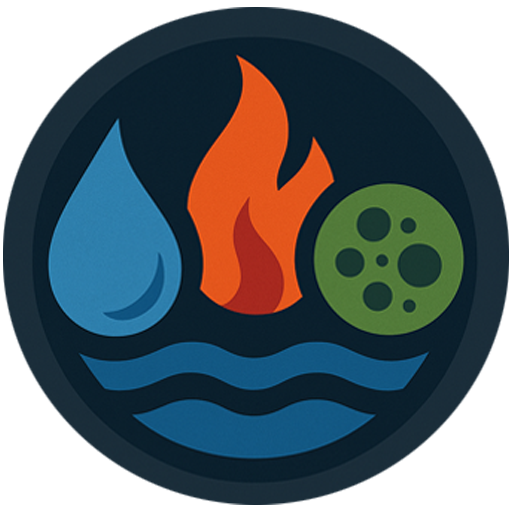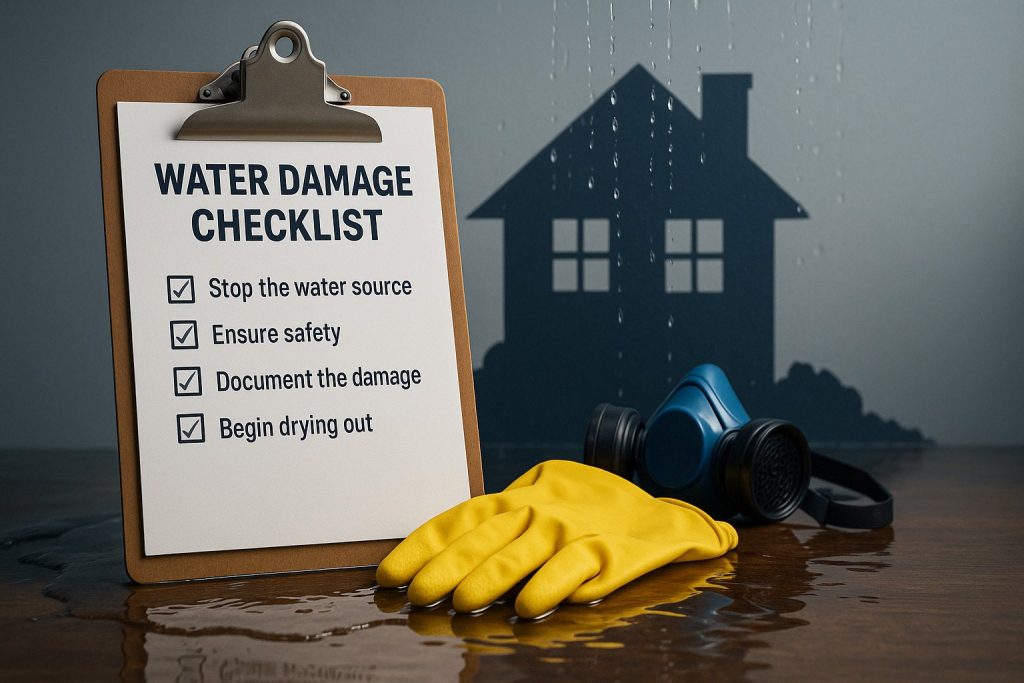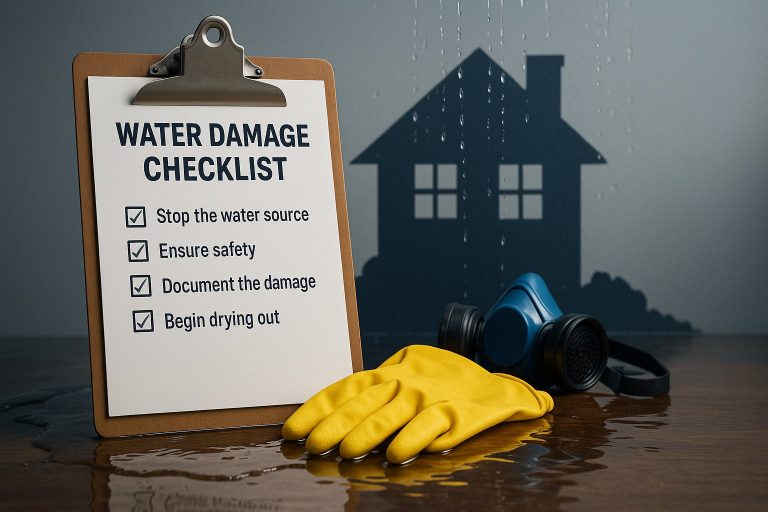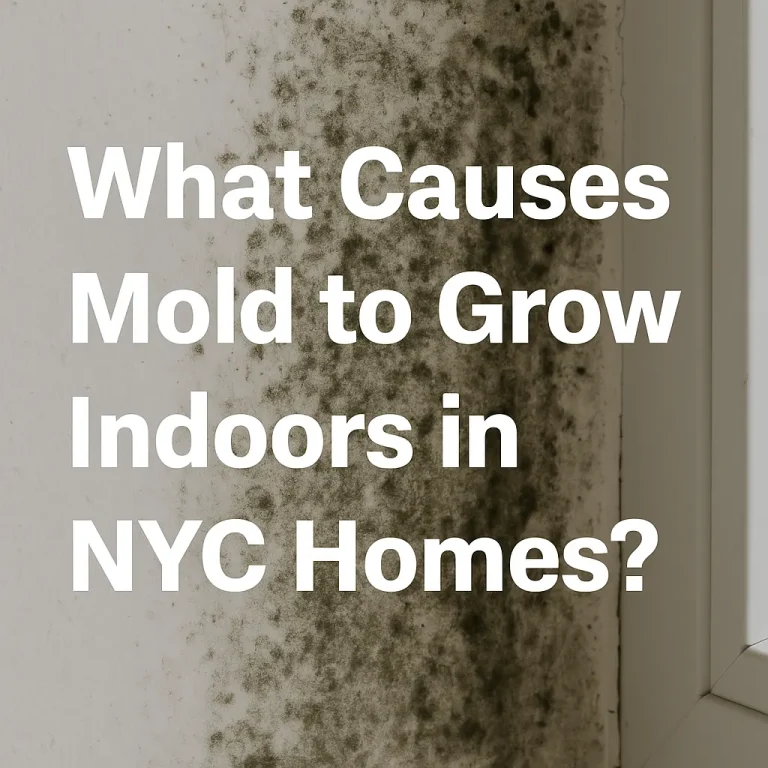Ultimate Water Damage Checklist
Water damage can strike in an instant; from a burst pipe in the middle of the night to an unexpected storm surge. No matter the cause, every minute counts. Use this actionable, step-by-step checklist to stop the spread, protect your belongings, and kickstart the restoration process before mold and costly repairs take hold.
-
1
Stop the Water at Its Source
Shut off valves immediately if the leak is plumbing-related (e.g., broken pipe, washing machine hose).
Turn off the main water supply if you can’t locate the leak.
Avoid contaminated water (sewer backups, floodwater), evacuate the area and call 911 or a professional remediation team if necessary.
-
2
Prioritize Safety First
Cut power to affected rooms at the breaker box before entering areas with standing water.
Gear up with rubber boots, gloves, and a mask, hidden contaminants can lurk in murky water.
Assess structural integrity: sagging ceilings or cracking walls signal collapse risk, leave dangerous areas to specialists.
-
3
Document Every Detail for Insurance
Photograph & video all damage from multiple angles, floors, walls, furniture, and personal items.
Make an inventory with descriptions, purchase dates, and estimated values.
Contact your insurer right away to open a claim, ask about covered services and recommended contractors.
Pro tip: Save visual evidence in cloud storage or email it to yourself to prevent loss if devices get damaged.
-
4
Extract Standing Water and Accelerate Drying
Remove water with a wet/dry vacuum, pumps, or buckets, don’t let it sit.
Ventilate aggressively: open windows, run box fans, and deploy dehumidifiers.
Don’t forget hidden spots: pull up carpets, check under cabinets, and behind appliances.
Use moisture meters or thermal imaging for a thorough inspection, hidden dampness can lead to mold within 24–48 hours.
-
5
Inspect & Prevent Mold Growth
Scan for visible mold: black or green spots on walls, ceilings, and beneath flooring.
Trust your nose: a musty odor often precedes visible mold.
DIY vs. professional: small patches (< 10 sq ft) can be cleaned with an EPA-registered solution; larger infestations demand certified mold remediation services.
-
6
Salvage and Clean Valuables
Furniture & rugs: if soaked over 24 hours in clean water, salvageable; in contaminated water, discard to avoid health risks.
Documents & photos: freeze-dry or air-dry; consult a restoration company for heirlooms.
Electronics: let a professional assess internal damage, never power on wet electronics.
-
7
Bring in the Pros: Restoration & Repairs
Even with your best DIY efforts, hidden moisture and structural damage can persist. Certified restoration specialists use advanced equipment to:
- Locate concealed water behind walls and beneath floors.
- Disinfect and dry every nook with industrial-grade dehumidifiers and air movers.
- Repair or replace drywall, flooring, insulation, and framing to pre-damage condition.
-
8
Prevent Future Disasters
Routine plumbing checks: inspect hoses, joints, and valves around appliances every six months.
Install water leak detectors near water heaters, sump pumps, and under sinks, receive instant phone alerts at the first drip.
Maintain gutters & downspouts to ensure water diverts away from your foundation.
Consider a backup sump pump with battery power for basements in flood-prone areas.
-
9
Don’t Overlook Structural & Electrical Follow-Up
Foundation review: water pooling can crack or shift foundations. Schedule a professional inspection if you notice settling or visible cracks.
Electrical safety: have a licensed electrician verify all wiring, outlets, and panels in areas exposed to water.
-
10
Take Care of You and Your Family
Temporary housing: seek accommodations if your home isn’t safe, check with your insurance for living-expense coverage.
Emotional support: water damage stress is real. Connect with community resources, friends, or a counselor to navigate the upheaval.
Key Takeaways and Next Steps
- Act in minutes: stopping the water and cutting power tops the list.
- Document everything for a smoother insurance claim.
- Dry fast to beat mold growth.
- Know when to call in pros for thorough restoration.
- Invest in prevention to avoid the next disaster.
Schedule your free inspection and custom prevention plan today




